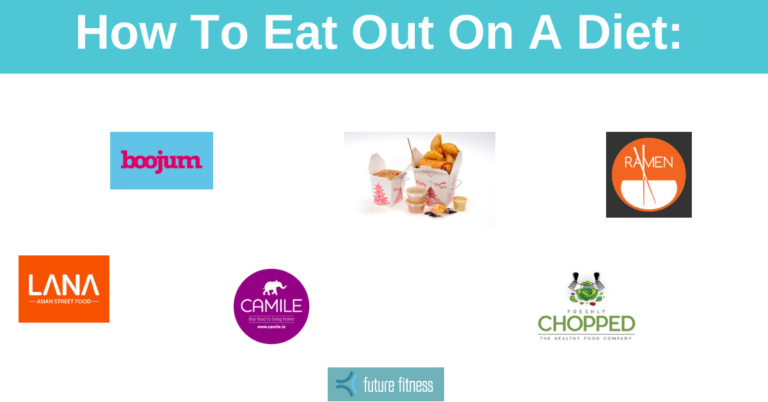Eating out on a diet doesn’t have to be hard! Especially when you can follow some tips and guidelines to help you make better decisions with food choices! In case you missed the previous articles in the series, here they are below:




Food from an Indian takeaway can be packed full of calories and fat especially, as most of it is cooked in oil or ghee (clarified butter). It’s probably one of the higher calorie takeaway choices available! This can make it really hard for someone who is trying to lose weight or watch their calorie intake! Following some of the below tips will save you a lot of calories!
Firstly, we will look at the starter options! Ideally limiting to one course would be the best option if trying to keep calories down but there are a few lower calorie options available. Poppadoms are a much lower calorie starter option than bhajis, samosas, pakoras or anything else deep-fried. Even though they are fried too, each poppadom contains about 60 calories.

Dips such as raita (cucumber and yogurt) and tomato sambal (chopped tomato and onion) are good options to go with rather than higher-calorie sweeter dips such as mango chutneys or lime pickle.
Other good lower-calorie starter options are kebabs. Meat on a stick = high in protein and cooked on a grill = lower in fat (less oil used than frying).

For main courses, as always, try to base your meal around a source of protein. Protein sources such as chicken or prawns are much lower calorie options than lamb, beef or paneer (Indian cheese).
Good vegetarian options include dahls in tomato-based sauces, chana masalas and aloo gobi (cauliflower and potato curry). Dahls are made with lentils and chana masalas are made with chickpeas. Chickpeas and lentils are filling and nutritious sources of plant-based protein. They are also really high in fibre!

The lowest calorie main options are usually tandoori or tikka as they are made without sauce (dry).
Tandoori is a style of cooking which involves marinating meats in yogurt and spices, then preparing over an intense charcoal fire which creates a nice flavour without having to use or add any fat such as oil.

It’s often the sauce that contains the most calories in an Indian takeaway so if opting for a curry, spoon the meat and veg on to your plate and only use a little bit of the sauce as required.
Lower calorie curries include some of the vegetarian ones mentioned above or madras, baltis, jalfrezis, bhunas and vindaloos (if you can take the heat). Try to look for tomato or spice based sauces over creamy coconut bases.
Higher calories ones include masalas (can pack up to 1,400 calories per portion), kormas, butters and pasandas which are usually made with lots of cream, coconut milk and/or ground almonds.

For carbs, opt for a small serving of basmati rice/plain naan bread. To save calories, you could also leave the carbs out completely and fill up on extra meat/veg.
Pilau rice has lots of oil added to it and a portion can contain well over 600 calories. By switching to basmati or skipping rice completely, it will really make a big difference and save you a lot of calories.

A plain naan bread can contain about 300 calories (this varies from place to place depending on size etc). Butter, garlic or cheesy naans are even higher again so opting for a small serving of a plain one would be the best option!

By following some of the above guidelines, it will make it so much easier to choose lower-calorie options in an Indian restaurant so we hope you enjoyed them.
If you feel like making your own Indian takeaway at home, check out some of our favourite Indian recipes below all under 300 calories:
https://mcfuturefitness.com/chickpea-curry/
Please share this article with a friend if you enjoyed it and keep an eye out for the next instalment.

